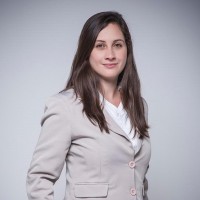Mortgage rates are trending up ahead of the Federal Reserve’s meeting next week, with the FOMC expected to increase the federal funds rate.
Freddie Mac’s Primary Mortgage Market Survey shows the 30-year fixed mortgage rate increased to 6.43% as of April 27, up four basis points from last week and 133 basis points from this time last year, when rates averaged 5.10%. The PMMS focuses on conventional, conforming loans for borrowers who put 20% down and have excellent credit.
“The 30-year fixed-rate mortgage increased modestly for the second straight week, but with the rate of inflation decelerating, rates should gently decline over the course of 2023,” Sam Khater, Freddie Mac’s chief economist, said in a statement.
Khater added: “Incoming data suggest the housing market has stabilized from a sales and house price perspective. The prospect of lower mortgage rates for the remainder of the year should be welcome news to borrowers who are looking to purchase a home.”
For now, according to the Mortgage Bankers Association (MBA) president and CEO Bob Broeksmit, “rates are trending up because financial markets are anticipating that the Fed will raise short-term rates” at its next meeting on May 2-3.
Per the Commerce Department‘s data, the U.S. economy grew at a 1.1% rate in the first quarter. It’s the weakest pace in three quarters but still represents growth.
“Continuing growth in the economy, coupled with a strong job market and inflation that is still too high – the first quarter PCE index showed 4% growth, double the Fed’s target – will likely lead the Fed to raise the Fed funds rate one more time at its next meeting, even as credit conditions tighten due to challenges and uncertainty in the banking sector,” Joel Kan, MBA’s vice president and deputy chief economist, said in a statement.
Kan added: “They are expected to then hold the funds rate at this higher level at least through the end of 2023.”
LLPA changes
Mortgage rates are increasing as the Federal Housing Finance Agency (FHFA)’s loan-level price adjustments (LLPAs) go into effect on May 1. (Because of the length of the process from origination to delivery to Fannie Mae and Freddie Mac, lenders have baked in LLPA changes into conventional loans for more than a month.)
On social media platforms, misstatements circulated that the change will make mortgage fees cheaper for low-credit scores borrowers than for good-credit scores borrowers, among other claims.
These fees are based on factors such as borrowers’ credit scores and the size of their down payment. They are charged by the government-sponsored enterprises Fannie Mae and Freddie Mac as an upfront fee, but most lenders convert it into an interest rate so borrowers can pay it over time.
FHFA Director Sandra Thompson said in a statement that changes will “bolster safety and soundness, better ensure the Enterprises fulfill their statutory missions, and more accurately align pricing with the expected financial performance and risks of the underlying loans.”
Thompson added: “Higher-credit-score borrowers are not being charged more so that lower-credit-score borrowers can pay less. The updated fees, as was true of the prior fees, generally increase as credit scores decrease for any given level of down payment.”
Thompson said that some updated fees are higher and some are lower, in differing amounts. “They do not represent pure decreases for high-risk borrowers or pure increases for low-risk borrowers. Many borrowers with high credit scores or large down payments will see their fees decrease or remain flat.”
According to Jiayi Xu, Realtor.com’s economist, while having a lower credit score still costs more, the effective penalty for scores under 680 is now smaller than it was.
Xu gave the following example: if a first-time home buyer has a credit score of 659 and a down payment of 20%, then the buyer will pay a fee equal to 2.25% of the loan balance under the new structure instead of the 3.0% under the previous policy. On a hypothetical $400,000 loan, the borrowers would save $3,000 in closing costs.
Meanwhile, borrowers with scores ranging from 680 to above 780 will likely have to pay slightly more than they did under the previous system. Xu said it raises concerns about the impact on middle-class homebuyers.
According to Xu, a homebuyer with a 739 credit score and a down payment of 20% will face a surcharge of 1.25%, compared to 0.75% previously. This equates to an additional $2,000 in closing expenses for a $400,000 loan.
“As we enter the typically busy spring season, affordability remains the primary concern in the housing market,” Xu says.






